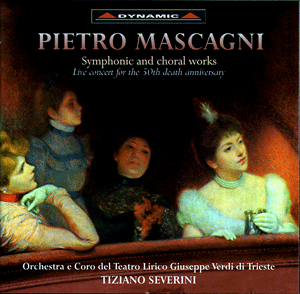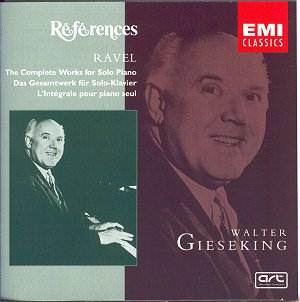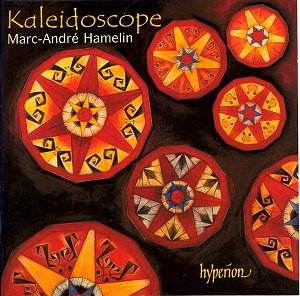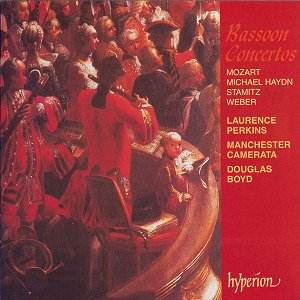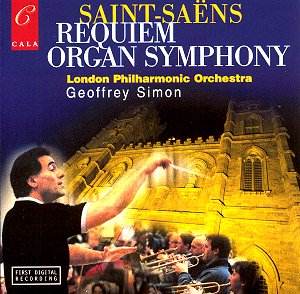 Composer: Camille Saint-Saëns
Composer: Camille Saint-Saëns
Works: Overture: La Princesse jaune, Requiem, Symphony No. 3 (Organ Symphony)
Performers: Tinuke Olafimihan (soprano), Catherine Wyn-Rogers (contralto), Anthony Roden (tenor), Simon Kirkbride (bass), James O’Donnell (organ), Hertfordshire, Harlow, and East London Choruses, London Philharmonic Orchestra, Geoffrey Simon (conductor)
Recording: Recorded at All Saints Church, Gospel Oak, London, 14-19 January 1993; Grand Organ recorded at Westminster Cathedral, 15 April 1993
Label: Cala Records
Camille Saint-Saëns remains a figure of paradoxes in the pantheon of French composers, embodying both the rigorous academic tradition and the emotive depth of Romanticism. The present recording showcases a compelling juxtaposition of his early operatic whimsy in the Overture to La Princesse jaune, the poignant spirituality of his Requiem, and the exuberant grandeur of his Symphony No. 3, commonly referred to as the Organ Symphony. This collection not only highlights Saint-Saëns’ stylistic versatility but also invites listeners to engage with the emotional landscapes shaped by his personal tragedies and triumphs.
The performance of La Princesse jaune transports the listener into Saint-Saëns’ Orientalist reverie, where the influence of Offenbach is palpable. Geoffrey Simon’s deft conducting allows the orchestra to navigate the work’s light-heartedness with charm, capturing the playful essence of the overture. The balance between orchestral colors and the lively rhythms is commendable, with the London Philharmonic Orchestra delivering a spirited account that reflects both buoyancy and precision. The overture serves as a delightful prelude, providing a vivid reflection of a Dutchman’s dreamlike journey, which is both whimsical and subtly poignant.
In stark contrast, the Requiem emerges as a deeply personal work, composed under the shadow of familial loss. Written in just eight days, the piece is imbued with a sense of urgency and heartfelt supplication. The quartet of soloists performs with a remarkable blend of individual character and cohesive unity, particularly notable in the “Hostias,” where the interplay between the soprano and contralto creates a hauntingly beautiful dialogue. Tinuke Olafimihan’s soprano shines with clarity and warmth, while Catherine Wyn-Rogers provides a rich, velvety depth that enhances the work’s emotional impact. The engineering captures the lush textures of the orchestration, with the ethereal contributions of the organ, played by James O’Donnell, seamlessly integrated despite its later addition to the recording.
Saint-Saëns’ Symphony No. 3 represents the apex of his orchestral mastery, particularly in its innovative use of the organ, which bursts forth triumphantly in the finale. This recording does justice to the symphony’s grand architectural design and vibrant thematic development. The slow introduction is marked by a stately gravitas, leading into the spirited Allegro that showcases the orchestra’s technical prowess. The climactic moment when the organ enters is exhilarating, capturing the essence of the work’s celebratory spirit. Simon’s interpretation balances the symphonic structure with a sense of spontaneity, allowing the music’s inherent drama to unfold naturally.
The sound quality of this recording is commendable, enhancing the transparent textures of Saint-Saëns’ orchestration. The acoustics of All Saints Church contribute to a sense of spaciousness, making the orchestral and vocal lines resonate with clarity. The engineering team has accomplished a meticulous balance between the various elements, allowing the listener to appreciate the intricate interplay of soloists, choir, and orchestra.
Comparatively, this recording stands tall among others, with its unique pairing of repertoire that illuminates both the well-trodden paths of the Symphony No. 3 and the lesser-known but equally compelling Requiem. The engaging performances and the thoughtful direction by Geoffrey Simon reaffirm the need for a reevaluation of Saint-Saëns’ place within the concert hall and the recording studio.
The combination of these works on a single disc encapsulates the duality of Saint-Saëns’ artistic identity, bridging the worlds of lightness and profundity. This recording not only serves as an excellent introduction to Saint-Saëns’ choral and orchestral works but also stands as a testament to the composer’s enduring relevance in the repertoire. The artistic and technical achievements of the performers, combined with the thoughtful programming, render this disc a significant contribution to Saint-Saëns’ recorded legacy.
